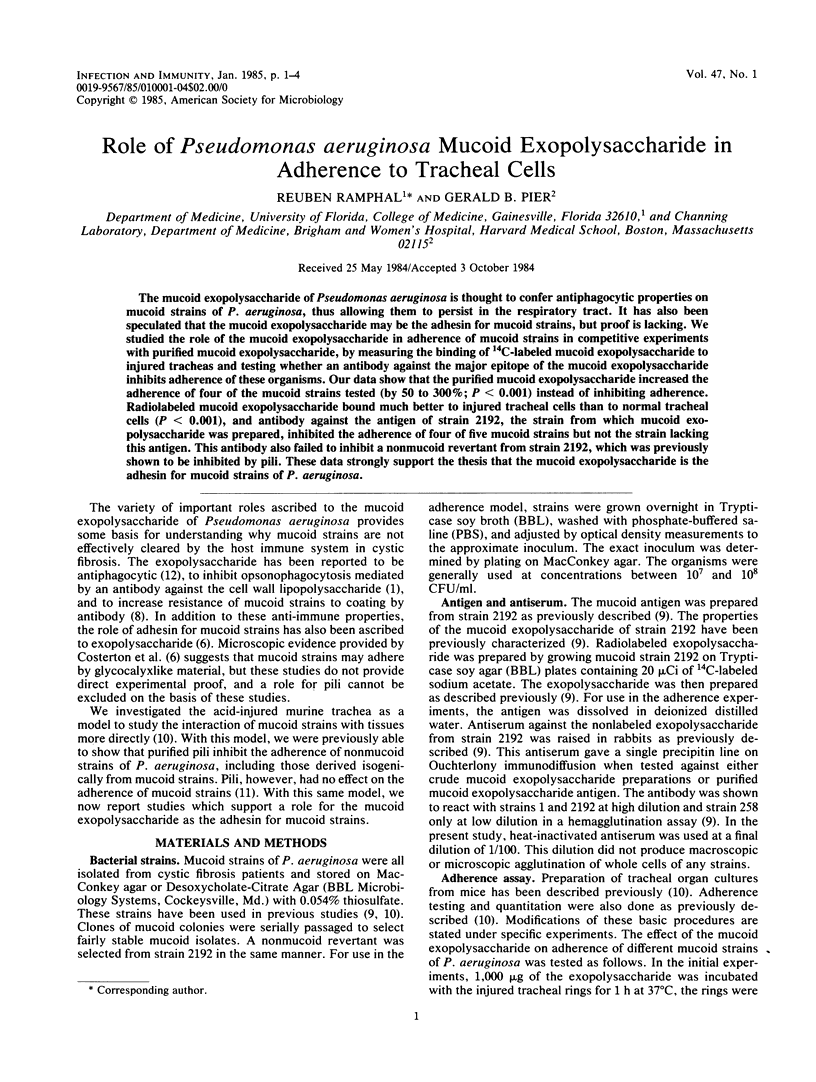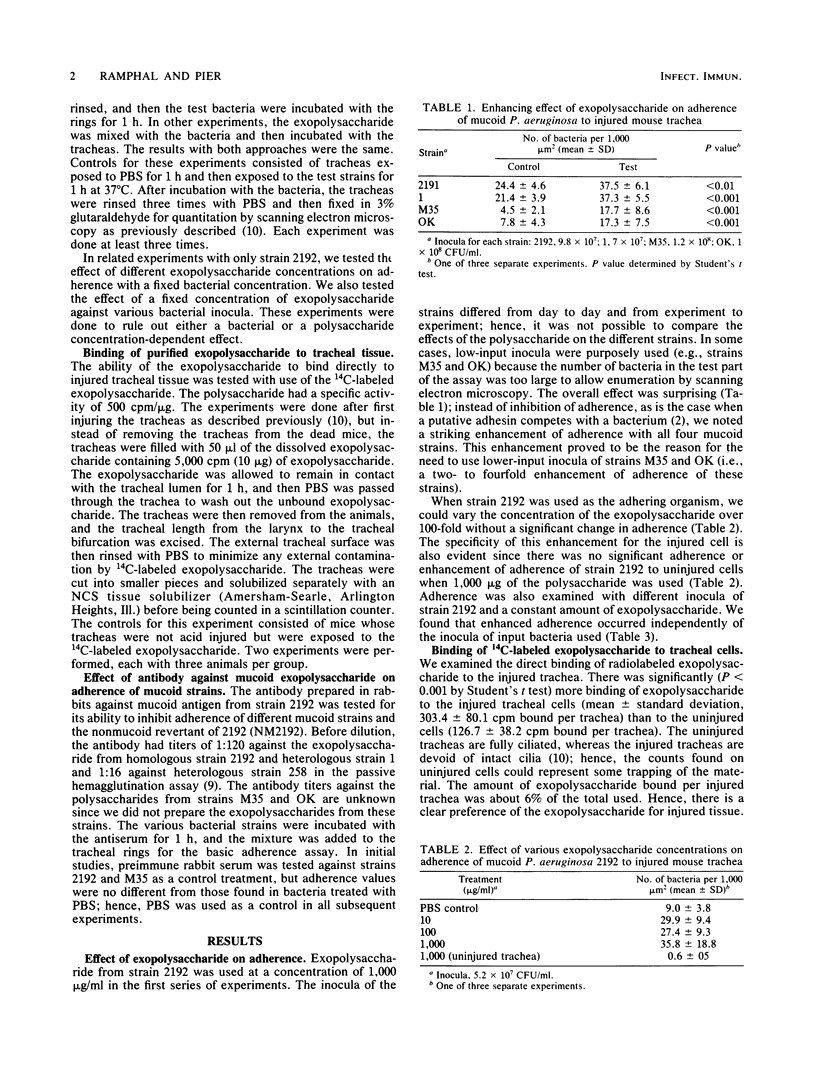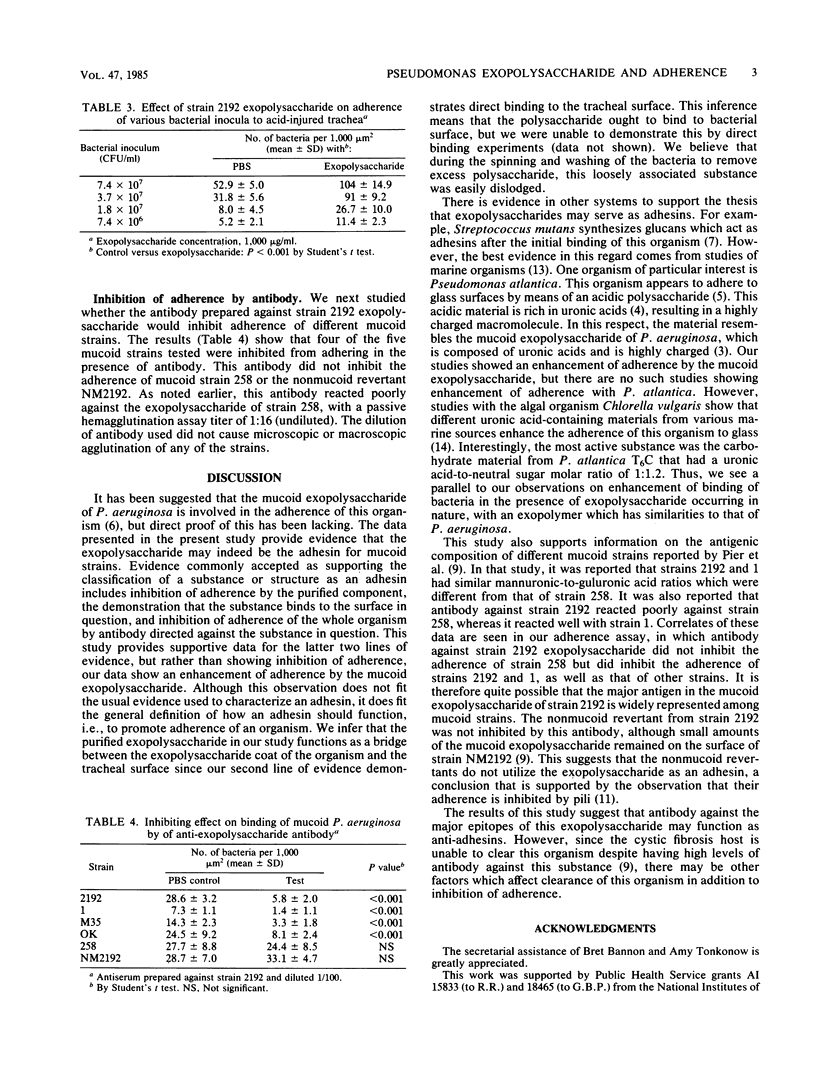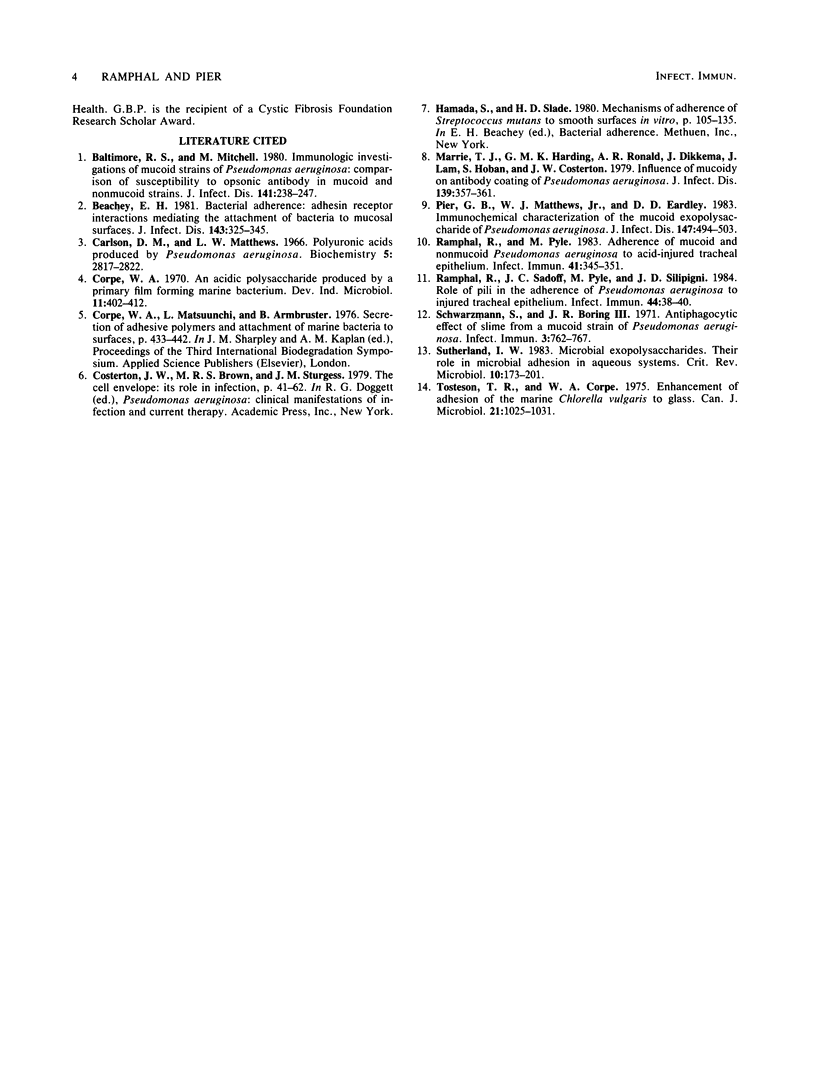Abstract
The mucoid exopolysaccharide of Pseudomonas aeruginosa is thought to confer antiphagocytic properties on mucoid strains of P. aeruginosa, thus allowing them to persist in the respiratory tract. It has also been speculated that the mucoid exopolysaccharide may be the adhesin for mucoid strains, but proof is lacking. We studied the role of the mucoid exopolysaccharide in adherence of mucoid strains in competitive experiments with purified mucoid exopolysaccharide, by measuring the binding of 14C-labeled mucoid exopolysaccharide to injured tracheas and testing whether an antibody against the major epitope of the mucoid exopolysaccharide inhibits adherence of these organisms. Our data show that the purified mucoid exopolysaccharide increased the adherence of four of the mucoid strains tested (by 50 to 300%; P less than 0.001) instead of inhibiting adherence. Radiolabeled mucoid exopolysaccharide bound much better to injured tracheal cells than to normal tracheal cells (P less than 0.001), and antibody against the antigen of strain 2192, the strain from which mucoid exopolysaccharide was prepared, inhibited the adherence of four of five mucoid strains but not the strain lacking this antigen. This antibody also failed to inhibit a nonmucoid revertant from strain 2192, which was previously shown to be inhibited by pili. These data strongly support the thesis that the mucoid exopolysaccharide is the adhesion for mucoid strains of P. aeruginosa.
Full text
PDF



Selected References
These references are in PubMed. This may not be the complete list of references from this article.
- Baltimore R. S., Mitchell M. Immunologic investigations of mucoid strains of Pseudomonas aeruginosa: comparison of susceptibility to opsonic antibody in mucoid and nonmucoid strains. J Infect Dis. 1980 Feb;141(2):238–247. doi: 10.1093/infdis/141.2.238. [DOI] [PubMed] [Google Scholar]
- Beachey E. H. Bacterial adherence: adhesin-receptor interactions mediating the attachment of bacteria to mucosal surface. J Infect Dis. 1981 Mar;143(3):325–345. doi: 10.1093/infdis/143.3.325. [DOI] [PubMed] [Google Scholar]
- Carlson D. M., Matthews L. W. Polyuronic acids produced by Pseudomonas aeruginosa. Biochemistry. 1966 Sep;5(9):2817–2822. doi: 10.1021/bi00873a006. [DOI] [PubMed] [Google Scholar]
- Marrie T. J., Harding G. K., Ronald A. R., Dikkema J., Lam J., Hoban S., Costerton J. W. Influence of mucoidy on antibody coating of Pseudomonas aeruginosa. J Infect Dis. 1979 Mar;139(3):357–361. doi: 10.1093/infdis/139.3.357. [DOI] [PubMed] [Google Scholar]
- Pier G. B., Matthews W. J., Jr, Eardley D. D. Immunochemical characterization of the mucoid exopolysaccharide of Pseudomonas aeruginosa. J Infect Dis. 1983 Mar;147(3):494–503. doi: 10.1093/infdis/147.3.494. [DOI] [PubMed] [Google Scholar]
- Ramphal R., Pyle M. Adherence of mucoid and nonmucoid Pseudomonas aeruginosa to acid-injured tracheal epithelium. Infect Immun. 1983 Jul;41(1):345–351. doi: 10.1128/iai.41.1.345-351.1983. [DOI] [PMC free article] [PubMed] [Google Scholar]
- Ramphal R., Sadoff J. C., Pyle M., Silipigni J. D. Role of pili in the adherence of Pseudomonas aeruginosa to injured tracheal epithelium. Infect Immun. 1984 Apr;44(1):38–40. doi: 10.1128/iai.44.1.38-40.1984. [DOI] [PMC free article] [PubMed] [Google Scholar]
- Schwarzmann S., Boring J. R. Antiphagocytic Effect of Slime from a Mucoid Strain of Pseudomonas aeruginosa. Infect Immun. 1971 Jun;3(6):762–767. doi: 10.1128/iai.3.6.762-767.1971. [DOI] [PMC free article] [PubMed] [Google Scholar]
- Sutherland I. W. Microbial exopolysaccharides -- their role in microbial adhesion in aqueous systems. Crit Rev Microbiol. 1983;10(2):173–201. doi: 10.3109/10408418209113562. [DOI] [PubMed] [Google Scholar]
- Tosteson T. R., Corpe W. A. Enhancement of adhesion of the marine Chlorella vulgaris to glass. Can J Microbiol. 1975 Jul;21(7):1025–1031. doi: 10.1139/m75-152. [DOI] [PubMed] [Google Scholar]


